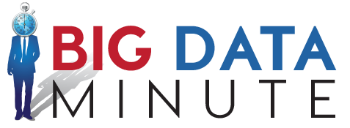
by Stephanie Rabinowotz | Jan 25, 2016 | Big Data, Data Science
Big Data has gained its name from the impact that large amount of data sets have and the insights they hold, but there are even bigger big data out there that we have been unable to tap into. There is an unbelievable amount of data produced daily and only continues to grow with the development of new technology.
Researchers at MIT have recently developed an algorithm that has the potential to analyze data sets that are so large, we do not currently have the equipment necessary to tackle them. The idea behind the algorithms is geometry and the use of topography to pick out basic features that are universal to any data set, no matter the size.
With this sort of topological approach, researchers can tap into the large, scary, interconnected data and pull out connections that are characteristic of all data. The issue now is that there is not a machine that can compute this information fast enough for it to be at all functional, but there are talks of one being developed soon.
Once the quantum mechanics is developed and can be paired with this topological approach, we will be able to understand connections like never before like global connections in the internet and even pathways of the human brain.
To learn more about how big data is discovering the secrets of the human brain check out this intriguing article!

by Stephanie Rabinowotz | Jan 8, 2016 | Business Intelligence, Business Optimization
Big Data is slowly moving away from simply being a buzz word to a respected tool used in the majority of industries these days. Now that Big Data is becoming more easily manageable and a well known tool, new systems are being developed from it. Cognitive Computing is on the rise and is said by some to be the new buzz word of 2016.
Cognitive computing is a new system that mimics the way the human brain processes information. By teaching computers to “think” in a more independent manner as opposed to being told what to do can lead to unlimited possibilities. The more human like computers become, the less busy work humans must do.
Some people think that computers are better than humans because they are objective, but every technology out there originated in someone’s brain. It is important to remember how capable the human brain can be and to emulate that is the goal of cognitive computing.
Cognitive computing uses Big Data Mining, pattern recognition and natural language processing to process information and create an appropriate response. If we can teach computers to think like humans we can use them to do the dirty work that tends to be highly time consuming and free up the experts to do more important work.
Through the combination of Machine learning, big data and cognitive computing there is a very real future of companies becoming significantly more efficient and saving a lot of money. This lucrative field is on the rise and is something everyone should expect to see a lot more of in this new exciting year!
To learn more about how cognitive computing mirrors the processes of the human brain check out this interesting article!

by Stephanie Rabinowotz | Dec 28, 2015 | Big Data, Business Intelligence, Internet of Things
As a child I can remember watching the futuristic life of The Jetson’s on Saturday morning cartoons and thinking “wow that must be a long time from now!” But this is not necessarily the case. With the immersion of Big data and its widespread application, we are beginning to see “The Future” much more quickly than we expected.
Now that Big Data Analytics has been around long enough to no longer think of it as a magical, all knowing, wonder tool, companies are now used to Big Data and understand how to manage it. Big Data has become a mainstream, ordinary process in the work place. With Big Data being more manageable and easy to understand, it is now being applied to many different new and exciting projects. Big Data is being utilized in Artificial Intelligence, Natural Language Processing, and Machine Learning.
Artificial Intelligence is being developed in forms anywhere from robotics to the Internet of Things. Big Data is being heavily utilized in Natural Language Processing to enhance applications such as Apple’s Siri. Natural Language Processing is something we can expect to see a lot of a The Internet of Things continues to make a bigger presence. Machine Learning will make its mark as algorithms continue to be developed to ensure efficiency and minimal human intervention. Between these three sectors we are looking at the world of The Jetson’s being very near.

by Stephanie Rabinowotz | Nov 13, 2015 | Business Optimization, Customer Satisfaction
Pinterest is most commonly known as an app for DIY, stay at home moms who have it all together. Although there is some validity to that assumption, Pinterest is a wonderful tool anyone can use to find answers to almost any question. I personally use Pinterest like I would use Google; anything I need to know I look to Pinterest to find, because I trust its resources and know that the remedies have been tried and tested in real world scenarios.
With more and more people turning to Pinterest for information, it is becoming a popular site for business marketing. Companies can hide adds in pins that look like they came from the trusted neighborly mom. Pinterest is enhancing the ability for companies to market their products by enhancing their search engine through Big Data analytics. Pinterest has always utilized Big Data to recommended pins based on personal preference and habit, but not they are taking it to a whole other level.
Pinterest is using machine learning techniques to turn pictures into quantifiable data that can aid in more customized searches. Now when a user looks at a picture of an outfit and they particularly like the boots in that picture, they can click solely on the boots. By clicking this one section of the picture they will be redirected to thousands of other pins that feature those boots- who they were designed by, where can you by them, and customer reviews. This is an amazing new invention in technology and is not only going to make online shopping ten times more efficient and accessible, but help businesses market their products in real world scenarios.
People are much more likely to buy a pillow they see on a trendy couch in a well designed living room rather than that same pillow by itself up against a blank backdrop. Consumers want to see what the product is going to look like when they bring it home. This is also a great way for companies to allow their customers to market for them. When a girl pins a picture of her outfit, she will now be marketing for each piece of clothing she is displaying. Anyone can click on her sweater or hat and instant access where to purchase it. This is going to save companies a lot of money and time on marketing if they learn how to use Pinterest to their benefit.










Recent Comments